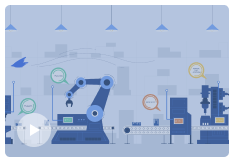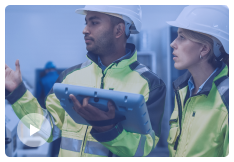Making OEE improvements on the shop floor through digital transformation remains top of mind for manufacturing decision makers. In a recent Forbes survey, 95% of respondents agreed that investment in digital transformation is essential to their company’s future success. However, technology alone won’t get teams there. The transition to digital requires a change in mindset that includes people, process and technology.
In this two-part blog series, Raven COO, Dr. Paul Turner, VP of Operations, Brenda Munyukwi and DuraVent Group Production Manager, Mike Gardner walk through how manufacturers can successfully shift from reactive to proactive processes on the shop floor, including industry best practices and real life examples of how to make adjustments that enable operators to improve OEE using technology.
Shifting from manual processes to digitization for OEE improvement
Before digitizing shop floor processes, DuraVent had a traditional, top-down approach to CI initiatives and switched to bottom-up after some buy-in from leadership. During the transition, management focused on the source, obtaining feedback directly from frontline operators to understand the nuances of both their machines and products. The realization? They had a ton of data being captured but weren’t using it to improve OEE.
Despite extensive investment in technology over the years, many manufacturing teams are still depending on manual processes like spreadsheets, whiteboards and even phone calls. In order to achieve the benefits of modern shop floor technology to proactively improve OEE, manufacturers need to execute sound frameworks for both continuous improvement and lean manufacturing plant-wide.
A digital transformation strategy not only provides data to an operations team to enable fact-driven decisions, but also improves the overall process itself.
For example, take a factory that has a problematic asset, suffers from periodic mechanical breakdowns and loses many hours of production per week. If it’s assumed that the breakdown is due to mechanical failures, then the team could believe they have an asset reliability issue. However, through digitization, operations teams are able to determine any other factors that may be causing these issues.
Prior to implementing Raven’s digital OEE improvement solution, Mike found his team questioning the reliability of their production information. “We had about 96 lines in our facility at that time. It became very, very cumbersome. We wanted to make sure we had the right people with the right information filling this out, which of course meant it was a team lead or a production supervisor, in which case, they were spending their time going line by line, manually inputting this information. While they were doing that, they weren’t leading their team or overseeing their normal duties. So we really added a lot of administrative work for them.”
The DuraVent team found data storage and retrieval of data in their process to be inconvenient and time-consuming. “We have to go around and manually take photographs, input those into our system, and that takes up a lot of space and time. More importantly, when we went to review that information, it was time-consuming to locate the right date, and transfer this data into Excel or an email. Going digital improved everything drastically, both from a reliability and from a speed standpoint. We are able to get real-time data anywhere.”
With Raven’s OEE improvement technology installed, data is collected in real-time from both operators and equipment, giving the frontline the ability to quickly pull information needed to make smart decisions. The outcome of digital transformation is more than just digitization and insights into hidden downtime losses. It also provides human context that influences operational changes to drive sustainable improvements across the shop floor.
With the right technology, manufacturers benefit from having access to this granular data to highlight operational process deficiencies. Using OEE information can change the way manufacturing teams look at a problem and tackle it.
Prioritizing people, processes and technology
It’s easy to rely on technology for problem-solving. But, regardless of its capabilities, technology itself is unlikely to produce results. A project that prioritizes technology over people and processes is likely to end up having minimal closed loop impact on productivity.
People are DuraVent’s most valuable asset, so they wanted a readily available technology, with buy-in from the team, free from burdens and additional processes. Once the frontline understood that the intention was to make their job easier, it changed the tide for them.
DuraVent quickly realized that in order to achieve successful digital transformation, they needed to prioritize people, processes and technology, in unison.
When you’re ready to go digital by integrating OEE improvement technologies on your shop floor, it’s key to prioritize people, process and technology — in that exact order. DuraVent rolled out their digital strategy with this approach to uncover eye-opening data that resulted in operational improvements.
Drive OEE improvement on your shop floor
Learn how you and your team can identify OEE improvements to increase production and reduce losses. Schedule your own personalized demo with one of our technical experts.







